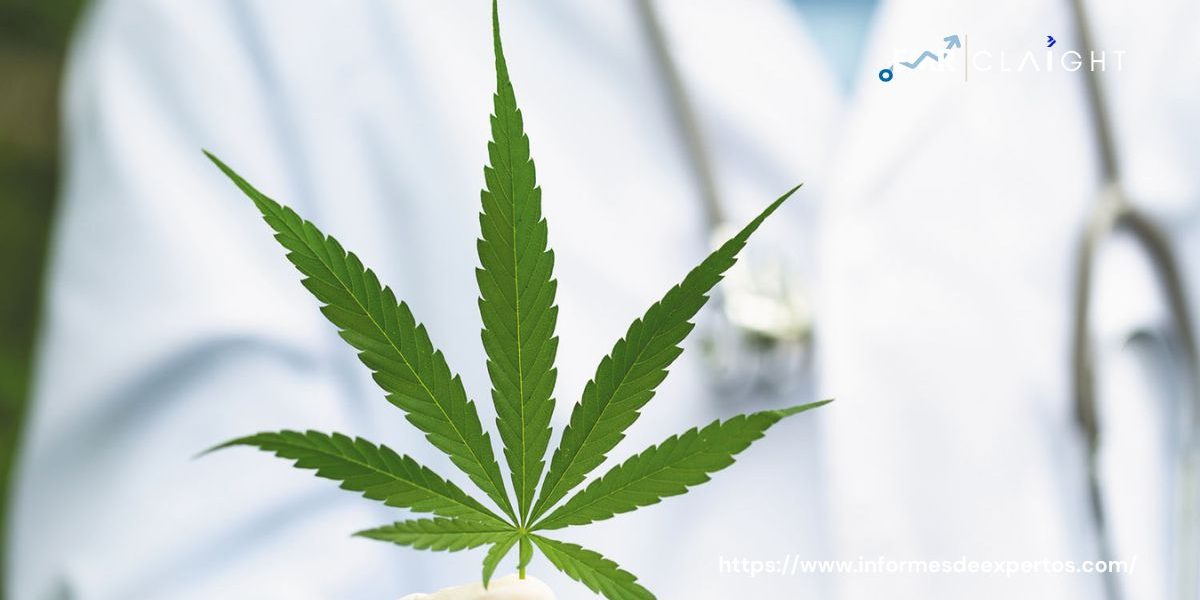Medical Cannabis Market: Exploring Regulation, Innovation, and Global Trends in Therapeutic Applications
The medical cannabis market refers to the global industry involved in the production, distribution, and consumption of cannabis-based products for medicinal purposes. Medical cannabis, also known as medical marijuana, is derived from the cannabis plant and contains compounds such as THC (tetrahydrocannabinol) and CBD (cannabidiol), which have potential therapeutic effects for various medical conditions. This article provides an overview of the medical cannabis market, including its history, regulatory landscape, and current trends.
History and Evolution
The use of cannabis for medicinal purposes dates back thousands of years, with historical records indicating its use in ancient civilizations such as China, India, and Egypt for treating pain, inflammation, and other ailments. However, the modern medical cannabis movement gained momentum in the 20th century, with scientific research shedding light on the therapeutic properties of cannabinoids and their potential applications in healthcare.
Regulatory Landscape
The regulatory landscape surrounding medical cannabis varies significantly from country to country and is subject to ongoing evolution and debate. While some countries have legalized medical cannabis for certain medical conditions, others maintain strict prohibitions on its use and distribution. In jurisdictions where medical cannabis is legal, regulations govern aspects such as cultivation, production, distribution, prescription, and patient access.
Types of Medical Cannabis Products
The medical cannabis market offers a diverse array of products tailored to different medical conditions and patient preferences. Some common types of medical cannabis products include:
- Cannabis Flower: Dried cannabis flower is one of the most traditional forms of medical cannabis consumption. It can be smoked, vaporized, or used to make cannabis-infused products such as edibles and tinctures.
- Cannabis Oils: Cannabis oils are concentrated extracts derived from the cannabis plant and are typically consumed orally or sublingually. They can contain varying ratios of THC and CBD and are used to manage symptoms such as pain, nausea, and seizures.
- Topical Products: Topical cannabis products, such as creams, lotions, and balms, are applied directly to the skin and are used to alleviate localized pain, inflammation, and skin conditions.
- Edibles: Cannabis-infused edibles are food and beverage products that contain cannabinoids such as THC and CBD. They are available in various forms, including gummies, chocolates, cookies, and beverages, and are used to provide long-lasting relief for conditions such as chronic pain and insomnia.
Market Dynamics
The medical cannabis market is influenced by various factors, including:
- Medical Research: Scientific research plays a critical role in advancing our understanding of the therapeutic potential of cannabis and cannabinoids. Clinical studies and trials contribute to the growing body of evidence supporting the use of medical cannabis for conditions such as chronic pain, epilepsy, multiple sclerosis, and cancer.
- Regulatory Changes: Changes in regulations and policies governing medical cannabis impact market dynamics, patient access, and industry growth. Regulatory developments such as legalization, decriminalization, and medical cannabis programs expansion can create opportunities for market expansion and investment.
- Market Growth: The medical cannabis market is experiencing rapid growth due to increasing patient demand, expanding legalization efforts, and growing acceptance of cannabis as a legitimate medical treatment option. Market growth is driven by factors such as population aging, rising prevalence of chronic diseases, and increasing awareness of alternative therapies.
- Industry Consolidation: The medical cannabis industry is undergoing consolidation as companies merge, acquire competitors, and form strategic partnerships to strengthen their market position, expand their product portfolios, and capitalize on emerging opportunities.
Current Trends
The medical cannabis market is characterized by several trends that are shaping the industry:
- Diversification of Products: There is a trend towards diversification of medical cannabis products, with companies developing new formulations, delivery methods, and product categories to meet the diverse needs and preferences of patients.
- Standardization and Quality Control: There is a growing emphasis on standardization, quality control, and product safety in the medical cannabis industry. Companies are implementing rigorous quality assurance protocols, testing procedures, and Good Manufacturing Practices (GMP) to ensure consistency, purity, and potency of their products.
- Telemedicine and Patient Education: Telemedicine platforms and digital health services are being used to facilitate patient consultations, medical cannabis recommendations, and education on cannabis use, dosing, and potential risks. Telehealth services improve access to medical cannabis for patients in remote areas and underserved communities.
- International Expansion: The medical cannabis market is expanding globally as more countries legalize medical cannabis and establish regulatory frameworks for its production, distribution, and use. Companies are exploring international markets, forming partnerships with local stakeholders, and navigating regulatory complexities to capitalize on emerging opportunities.
Challenges and Opportunities
The medical cannabis market faces several challenges, including:
- Regulatory Uncertainty: Regulatory uncertainty, inconsistency, and ambiguity pose challenges for companies operating in the medical cannabis industry. Companies must navigate complex and evolving regulatory landscapes, comply with strict regulations, and address legal and compliance risks.
- Stigma and Misinformation: Stigma, misinformation, and societal attitudes towards cannabis remain barriers to patient acceptance, physician education, and mainstream adoption of medical cannabis. Efforts to destigmatize cannabis, raise awareness of its therapeutic benefits, and educate healthcare professionals are needed to overcome these challenges.
- Research Limitations: Despite growing interest in medical cannabis, research into its efficacy, safety, and long-term effects is still limited due to regulatory restrictions, funding constraints, and methodological challenges. More research is needed to generate robust evidence, validate therapeutic claims, and inform clinical practice.
- Market Competition: The medical cannabis market is becoming increasingly competitive as more companies enter the industry, driving innovation, price competition, and market saturation. Companies must differentiate themselves through product differentiation, branding, and value-added services to stand out in a crowded market.
Despite these challenges, the medical cannabis market presents numerous opportunities for growth and innovation, particularly in areas such as personalized medicine, novel drug delivery technologies, and medical cannabis-derived pharmaceuticals. Companies that can navigate regulatory hurdles, demonstrate product efficacy and safety, and build trust with patients and healthcare professionals are well-positioned to succeed in the evolving medical cannabis market.
Future Outlook
The medical cannabis market is expected to continue growing in the coming years, driven by factors such as increasing patient demand, expanding legalization efforts, and growing acceptance of cannabis as a legitimate medical treatment option. Advances in research, technology, and regulatory frameworks are likely to further fuel market growth and innovation. The future of the medical cannabis market holds promise for patients, healthcare providers, and industry stakeholders seeking alternative treatments for a wide range of medical conditions.





